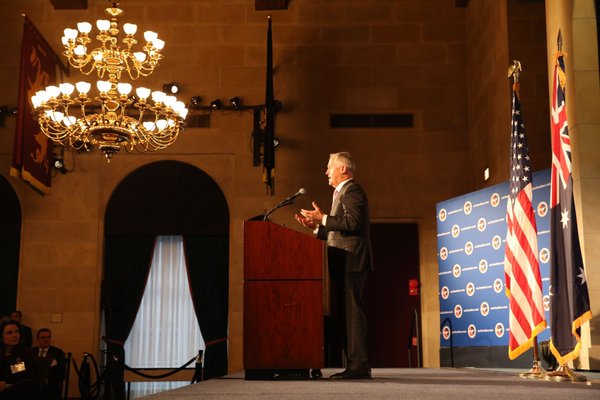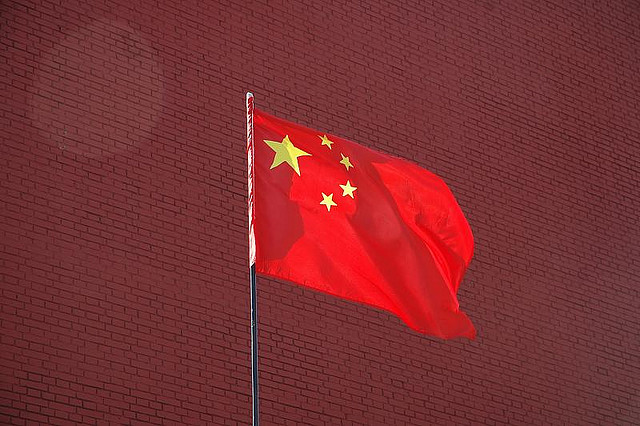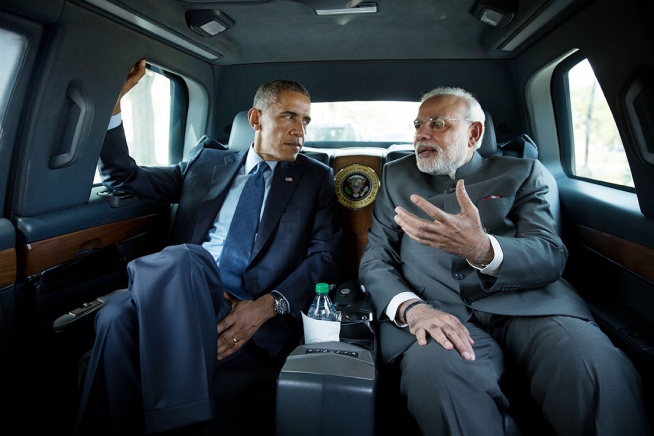
Chinese President Xi Jinping paid his first state visit to the US from 22 to 25 September. On the eve of Xi’s visit, I wrote that Beijing was carefully managing the expectations of the visit, both because of the accumulating tensions in the Sino–US relationship this year and because of a range of policy uncertainties at home. The achievements of the visit were therefore likely to be modest. Just how successful was it?
On 25 September, China’s state-run Xinhua News Agency, together with the Foreign Ministry, released a 49-point outcome list noting the achievements of the trip. Concurrently, the White House also released a fact sheet summarising the visit’s outcomes. Judging from the Chinese list, the achievements of Xi’s visit are substantial. Checking this list against the American version, however, one quickly finds striking contrasts in the framing and ordering of specific achievements and even, in one extremely important case, different interpretations of those achievements.
The first item on the Chinese list is the claim that both sides agreed to continue to build a new type of major country relationship (中美新型大国关系). This makes eminent sense from the Chinese perspective as it has been Xi’s signature proposal for advancing the relationship since February 2012.
In contrast, the first item on the White House fact sheet is cooperation on Afghanistan—the idea of ‘a new type of major country relationship’ is nowhere to be seen. While Washington simply refused to accept that such a concept defines the relationship, Beijing worked to prioritise the claim for its domestic audience in order to bring credibility to Xi’s US policy.
The absence of the concept in the White House fact sheet doesn’t necessarily mean the failure of Chinese diplomacy. After all, America too has had difficulty persuading China to accept its own preferred formulations in the past, such as the ‘responsible stakeholder’ label. But it does mean that China will need to rethink and recast the ‘new type of major country relationship’ idea if it’s to have more purchasing power inside the US. It also shows that Beijing’s approach of managing low expectations of this visit was wise, with Xi’s major goal remaining elusive.
The contrast in the framing and ordering of the outcomes of the visit reveals a conceptual mismatch between how the relationship is understood in China and in the US. The Chinese list starts from the bilateral level and then proceeds to cooperation on regional and global issues. The reverse is true for the American list.
So the US sees the China relationship as part of its global strategy. At a regional level, the Obama administration has subjected its China policy to the larger framework of its strategy of rebalancing to Asia. Indeed, many Chinese analysts complain that the US has sacrificed its China policy for the rebalancing strategy.
China, in contrast, focuses on the bilateral relationship itself. But there’s something for China to learn here: if it truly wants to become a regional or even global power, it must raise its strategic horizon beyond the bilateral.
The American side made it clear that this was going to be a business-like summit between Obama and Xi, and one where they could tackle a range of thorny issues from cyber security to the South China Sea. They took a transactional approach to the visit. Conversely, the Chinese side seems to prefer a relational approach by emphasising the importance of defining the scope of the bilateral relationship.
In important areas, the American approach prevailed over the Chinese one. In particular, China accepted the American agenda of prioritising cyber security, basically accepted the American framing of the issue, and pledged that the Chinese government will not ‘conduct or knowingly support cyber-enabled theft of intellectual property.’ Interestingly, however, while America sees this as strictly a bilateral issue, the Chinese frame it as a ‘global challenge’ and placed it toward the end of the list outcomes. The divide between the two sides’ conceptual understanding of cyber security is still wide.
Yet the largely transactional nature of the visit wasn’t a bad thing. While a relational approach is necessary for the long-term mutual benefit of the relationship, a transactional approach is needed to manage current issues and stabilise the relationship from degenerating into confrontation. The agreements reached on cyber security, particularly the establishment of a high-level joint dialogue mechanism, while a modest initial step, are hugely important in stabilising the relationship. The new annexes on air-to-air safety and crisis communications between the two militaries are also important for crisis management in the South China Sea.
Modest outcomes such as these have major significance given the current dynamics of the Sino–US relationship. Although Xi’s visit falls short of delivering his major proposal of building a new type of major country relationship with the US, he succeeded in stabilising the relationship by putting cooperation back on track. And that’s no small achievement.
 At the White House today, Prime Minister Malcolm Turnbull announced a new Cyber Security Dialogue between Australia and the United States. The initiative will be co-convened by ASPI’s International Cyber Policy Centre and the Centre for Strategic and International Studies in Washington, DC.
At the White House today, Prime Minister Malcolm Turnbull announced a new Cyber Security Dialogue between Australia and the United States. The initiative will be co-convened by ASPI’s International Cyber Policy Centre and the Centre for Strategic and International Studies in Washington, DC.








